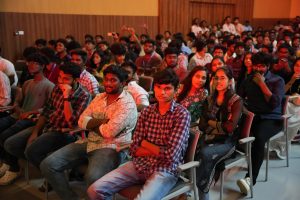Breakthrough in Mathematical Research: Dr Subha Sandeep Repaka’s Innovative Study on Unitary Groups
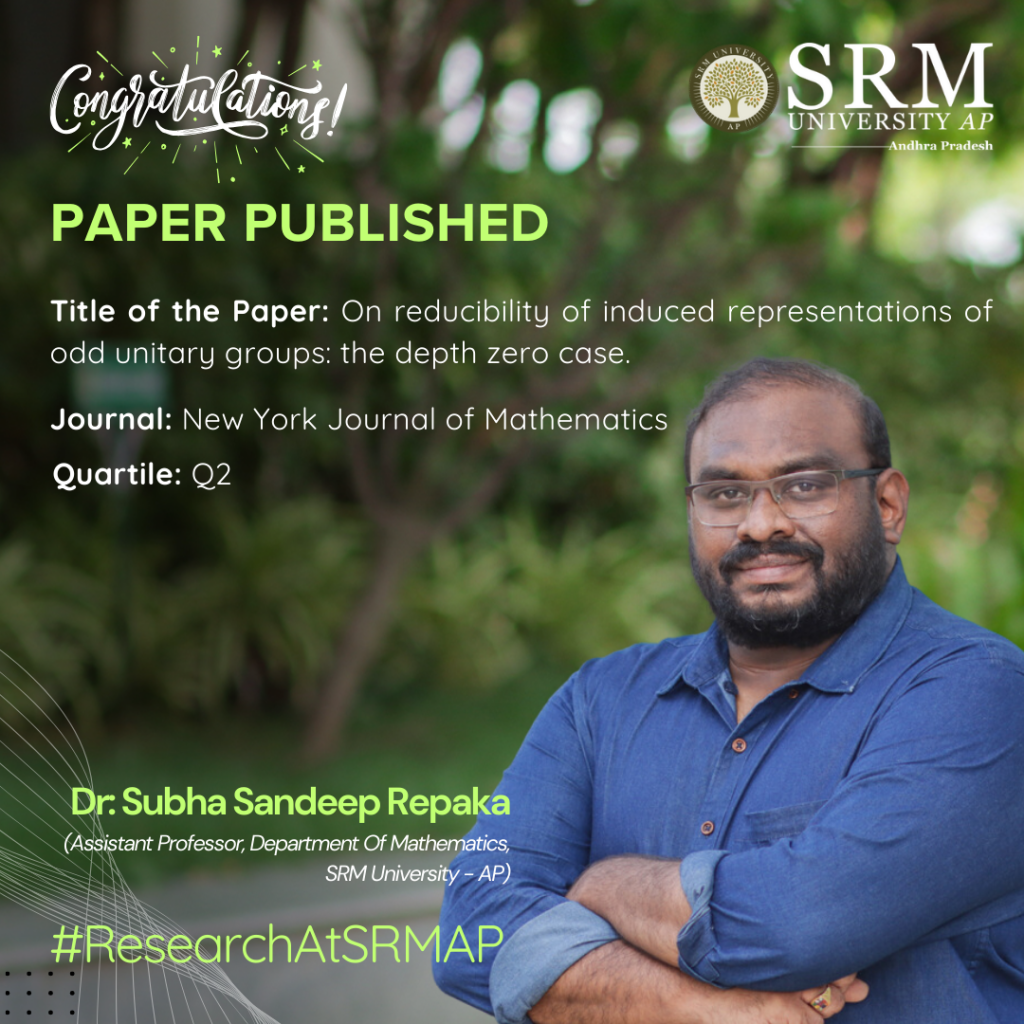
The Department of Mathematics, SRM University-AP, is pleased to announce that Assistant Professor Dr Subha Sandeep Repaka has published a significant research paper titled “On Reducibility of Induced Representations of Odd Unitary Groups: The Depth Zero Case.” This accomplishment reflects Dr Repaka’s expertise and dedication to advancing mathematical research, further enriching the academic contributions of the department and the university.
Abstract:
We study a problem concerning parabolic induction in certain $p$-adic unitary groups. More precisely, for $E/F$ a quadratic extension of $p$-adic fields the associated unitary group $G=\mathrm{U}(n,n+1)$ contains a parabolic subgroup $P$ with Levi component $L$ isomorphic to $\mathrm{GL}_n(E) \times \mathrm{U}_1(E)$. Let $\pi$ be an irreducible supercuspidal representation of $L$ of depth zero. We use Hecke algebra methods to determine when the parabolically induced representation $\iota_P^G \pi$ is reducible.
Future Research Plans:
We would like to solve the same problem which I had solved in this paper for the groups U(n,n) and U(n,n+1) over p-adic fields using L-Functions which is a very novel approach.
The link to the article:
http://nyjm.albany.edu/j/2024/30-50.html

- Published in Departmental News, Math News, News, Research News
Celebrating Sporting Excellence at Inter School Sports Championship
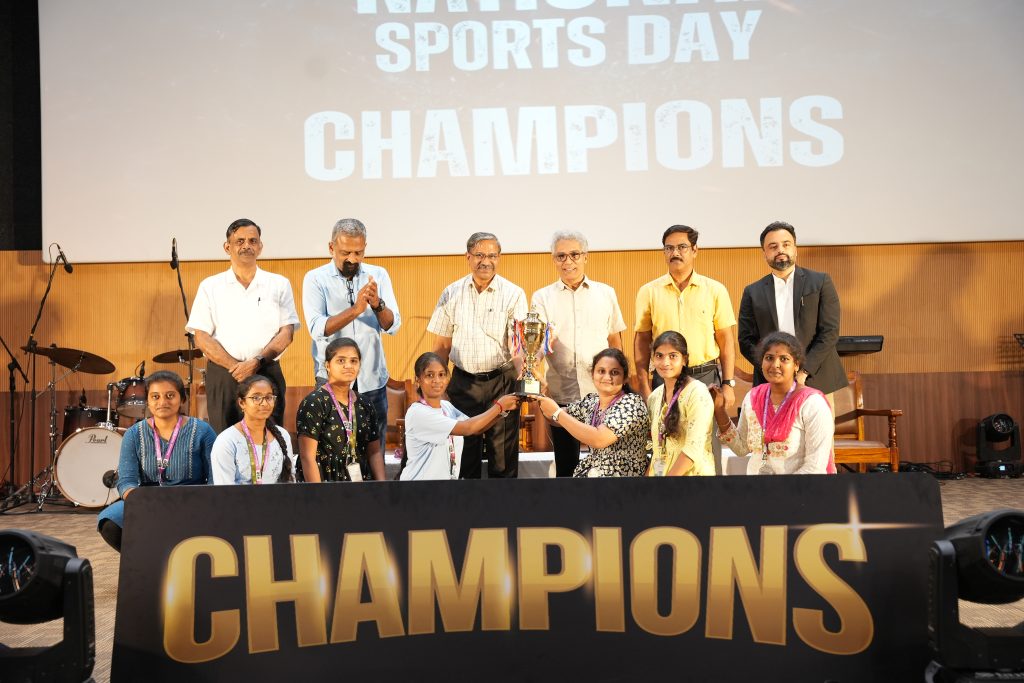 The Directorate of Sports at SRM University-AP proudly hosted the grand closing ceremony of the Inter School Sports Championship (ISC), a celebration of sportsmanship, teamwork, and dedication among students. The event, attended by esteemed guests including Chief Guest Naveen Chary, a renowned fitness influencer, Registrar Dr R Premkumar, Deans, Directors, and a vibrant crowd of students, marked the culmination of a remarkable four-week journey.
The Directorate of Sports at SRM University-AP proudly hosted the grand closing ceremony of the Inter School Sports Championship (ISC), a celebration of sportsmanship, teamwork, and dedication among students. The event, attended by esteemed guests including Chief Guest Naveen Chary, a renowned fitness influencer, Registrar Dr R Premkumar, Deans, Directors, and a vibrant crowd of students, marked the culmination of a remarkable four-week journey.
The ISC Championship witnessed the enthusiastic participation of 2,247 students from all three schools: the School of Engineering and Sciences, the Paari School of Business, and the Easwari School of Liberal Arts. Participants showcased their skills in a variety of sports, promoting camaraderie and school spirit throughout the event.
Among the games, cricket was the most popular, attracting 900 participants; Badminton followed with 482 participants and volleyball with 256 participants. The football, basketball, and chess competitions also saw enthusiastic participation, with 180, 102, and 167 players, respectively. The School of Engineering and Sciences (SEAS) emerged as the triumphant winner of the prestigious rolling trophy.
“This championship has not only highlighted our students’ athletic abilities but has also been instrumental in cultivating a culture of sportsmanship at SRM University-AP,” said Dr Dhiraj Parasher, Director of Sports, SRM University-AP. “It has opened pathways for students to consider sports as a viable career option, enriching their overall university experience.”
The closing ceremony featured an engaging live performance by Band Kadali, along with captivating classical and Western dance performances by talented students.
In his address, Registrar Dr R Premkumar reflected on the significance of the event: “As we celebrate these achievements, let us carry forward the enthusiasm and lessons learned during this championship into all our future endeavours, both in sports and academics. The friendships forged and experiences gained here will resonate within our community for years to come.”
The ISC Championship has proven to be more than just a competitive event; it has served as a platform for personal growth, team spirit, and the forging of lasting bonds among students, making it a memorable chapter in the SRM University-AP journey.
- Published in Departmental News, News, Sports News
Dr Narayanamoorthy’s Review on Pt-based Electrocatalysts Features in Elsevier Journal of IF 20.8
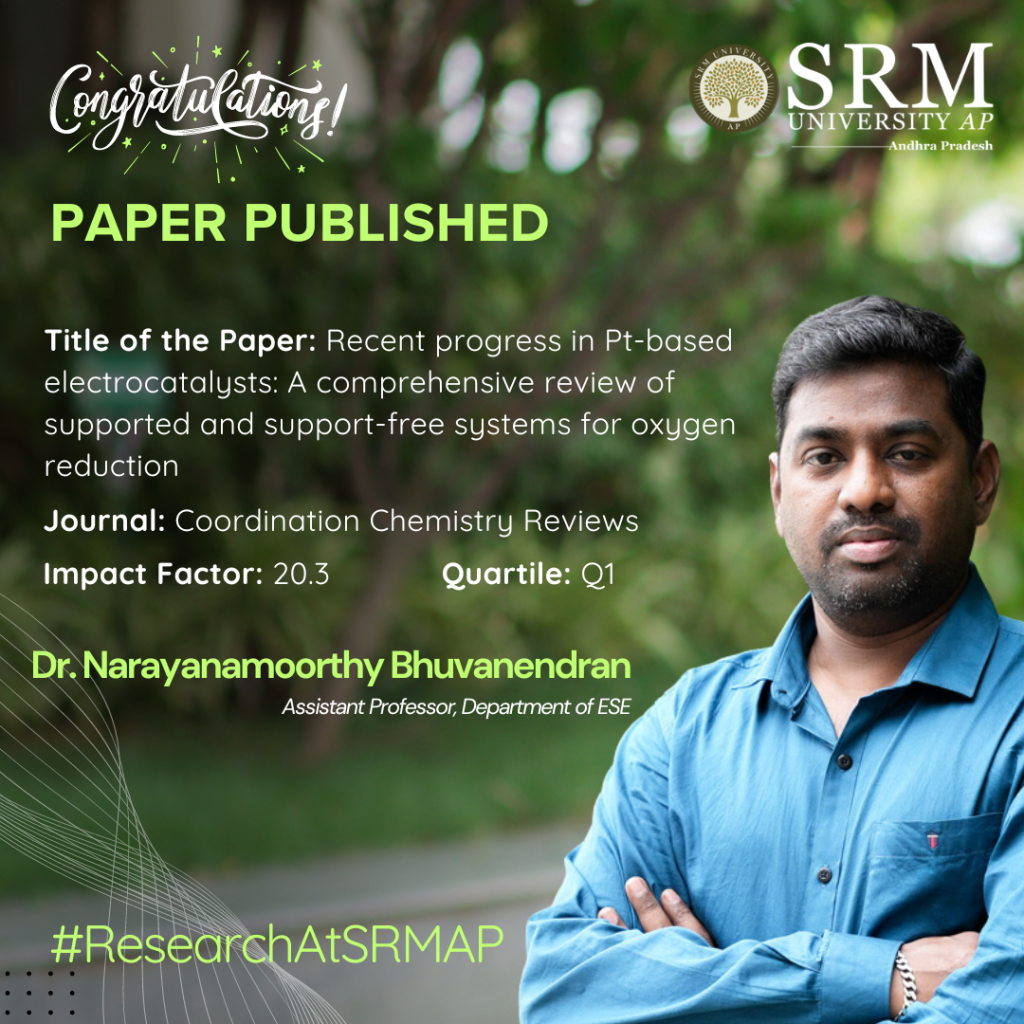
With the rising frequency of climate crises and to address growing energy demands and environmental concerns, a shift from conventional fossil fuels to sustainable alternatives is essential. As Hydrogen fuel cells are a viable and sustainable alternative to conventional fossil fuels, various research is being conducted in maximising the efficiency of fuel cells.
Dr Narayanamoorthy Bhuvanendran, Assistant Professor from the Department of Environmental Science and Engineering, works extensively in this field and has recently reviewed the advancements in Pt-based electrocatalysts that can reduce the Oxygen reduction rate (ORR) in Hydrogen fuel cells in his research paper. The paper titled “Recent progress in Pt-based electrocatalysts: A comprehensive review of supported and support-free systems for oxygen reduction” was published in the Q1 journal Coordination Chemistry Reviews with an impact factor of 20.8.
Abstract
Recent advancements in Pt-based catalysts for the oxygen reduction reaction (ORR) have improved energy conversion efficiency in fuel cells and metal-air batteries. However, balancing electrocatalyst activity and stability remains challenging. Due to Pt’s high cost and limited availability, research focuses on Pt alloys, hybrid catalysts, and nanostructured materials to enhance catalytic performance using cost-effective methods. Hybridising Pt with other active components offers synergistic effects and aligns with the U.S. Department of Energy’s 2025 targets. This review examines recent developments in supported and support-free Pt-based electrocatalysts, highlighting carbon, inorganic, and hybrid support materials, as well as support-free metal nanostructures, for superior ORR performance in energy applications.
Explanation of the Research in Layperson’s Terms
Hydrogen, with its abundance and eco-friendly properties, is a promising fuel for sustainable energy systems, powering vehicles like electric cars and buses through efficient energy conversion devices such as fuel cells. While fuel cells effectively convert hydrogen into electricity, further advancements in electrocatalysts and cost-efficiency are needed to make this technology commercially viable. The oxygen reduction reaction (ORR) in fuel cell cathodes requires efficient catalysts for better performance. Pt is the top ORR catalyst for low-temperature fuel cells due to its ability to break O-O bonds efficiently. However, issues like Pt nanoparticle dissolution, surface impurities, and structural changes during reactions limit its effectiveness. This review explores improving electrocatalysts by increasing active sites, boosting metal-support interaction, and enhancing stability for better performance.
Practical Implementation/ Social Implications of the Research
Several challenges remain in scaling Pt-based electrocatalysts for oxygen reduction reaction (ORR), particularly around cost, performance, and environmental impact. Platinum’s high cost and scarcity drive up production costs, and synthesis methods are complex and hard to scale. Catalyst durability also degrades over time in industrial conditions. Efforts are focused on developing green synthesis methods, recovering platinum from used catalysts, and exploring alternatives like atomic layer deposition to reduce Pt usage while enhancing efficiency. New nanostructures, such as 2D layers and hybrid materials, could balance performance and cost. Future research aims to meet the U.S. Department of Energy’s 2025 targets for improved performance and durability, essential for advancing Pt-based electrocatalysts and enabling widespread fuel cell adoption.
Collaborations
- Prof. Huaneng Su, Institute for Energy Research, Jiangsu University, Zhenjiang, China
- Prof. Sae Youn Lee, Department of Energy and Materials Engineering, Dongguk University, Seoul, Republic of Korea
- Dr Srinivasan Arthanari, Research Professor, Chungnam National University (CNU), Daejeon, Korea
- Dr Sabariswaran Kandasamy, Assistant Professor, Department of Biotechnology, PSGR Krishnammal College for Women, Coimbatore, India
Dr Narayanamoorthy will continue to work in this domain, developing novel nanostructured hybrid electrocatalysts for energy and environmental applications.
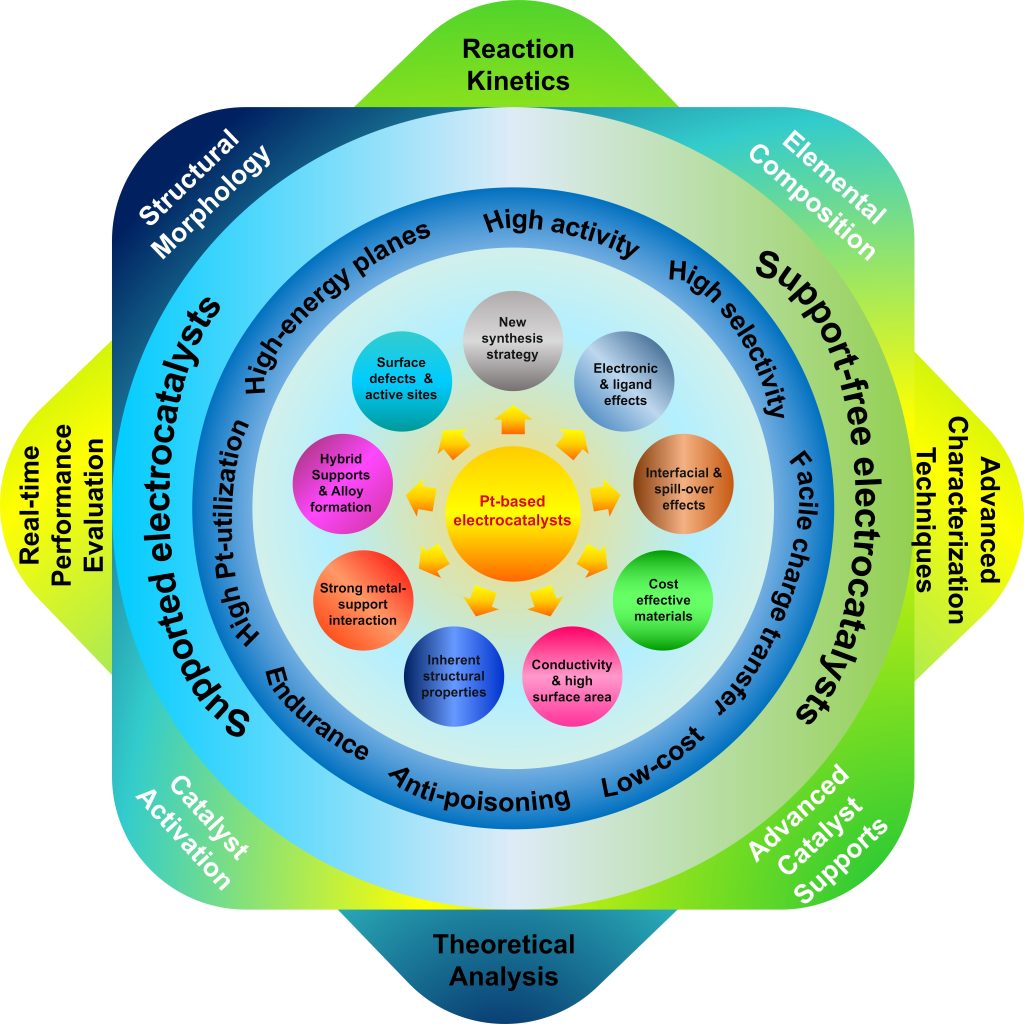
- Published in Departmental News, ENVS News, News, Research News
Patent Filed for Innovative Load Balancing System in Cloud Computing
 In a significant advancement for cloud computing technologies, Dr Kakumani K C Deepthi and Dr Prasanthi Boyapati, Assistant Professors in the Department of Computer Science and Engineering, alongside B Tech student Ms Yarra Khyathisree, have successfully filed and published a patent titled “SYSTEM AND METHOD FOR AUTOMATIC LOAD BALANCING FOR BANK OF CLOUD SERVERS.” The patent, registered with Application Number 202441057273, was officially published in the Patent Office Journal.
In a significant advancement for cloud computing technologies, Dr Kakumani K C Deepthi and Dr Prasanthi Boyapati, Assistant Professors in the Department of Computer Science and Engineering, alongside B Tech student Ms Yarra Khyathisree, have successfully filed and published a patent titled “SYSTEM AND METHOD FOR AUTOMATIC LOAD BALANCING FOR BANK OF CLOUD SERVERS.” The patent, registered with Application Number 202441057273, was officially published in the Patent Office Journal.
As cloud computing continues to expand, effective load balancing has become critical for optimizing distributed environments. Load balancing is essential for distributing data and services across a scalable network of nodes, ensuring that no single node becomes overwhelmed. This is particularly important as data storage needs in cloud environments grow exponentially.

The newly patented system aims to enhance load balancing and job scheduling, addressing the increasing demand for efficient services. The article highlights various notification algorithms designed to improve these processes, comparing the latest methods to boost performance and user satisfaction.
This innovation marks a promising step forward in cloud computing technology, paving the way for more robust and efficient systems to meet the evolving needs of users and organizations alike.
Abstract of the Research
Load balancing is crucial for the efficient operation of distributed environments, especially with the rapid growth of cloud computing and increasing customer demands for more services and positive outcomes. Cloud load balancing involves transparently sharing data and delivering services through a scalable network of nodes. Due to the open and distributed nature of cloud computing, the amount of data storage grows rapidly, making load balancing a critical issue. Managing load information in such a vast system is costly. A major challenge in cloud computing is distributing dynamic workloads across multiple nodes to prevent any single node from becoming overwhelmed. Numerous algorithms have been proposed to effectively allocate customer requests to available cloud nodes. These methods aim to enhance the overall performance of the cloud and provide users with more satisfying and efficient services. This article reviews various notification algorithms to address cloud computing load balancing and job scheduling issues, comparing the latest methods in the field.
Practical Implementation or the Social Implications Associated with the Research
In this patent, the common load-balancing algorithms in cloud computing include:
• Round Robin
• Least Connection
• Randomized
• Load Balancing Challenges in Cloud Computing
• Automated Service Provisioning
• Virtual Machine Migration
• Energy Management
• Stored Data Management
Future Research Plans
To implement automatic load balancing for not only banks but also some other applications where cloud servers can be designed by ensuring optimal resource utilization, performance, and reliability.
- Published in CSE NEWS, Departmental News, News, Research News










